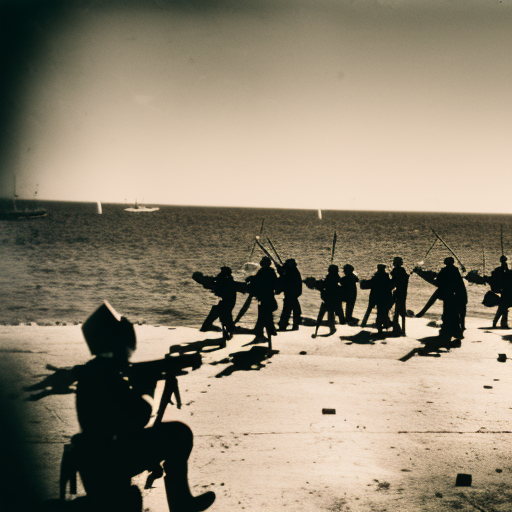Battle of Málaga: A Clash of Empires
The Battle of Málaga was a significant naval engagement that took place on August 24, 1704, during the War of the Spanish Succession. It was fought between the combined forces of the Kingdom of Great Britain and the Dutch Republic, known as the Grand Alliance, and the Kingdom of France and the Kingdom of Spain. The battle occurred near the port city of Málaga on the southern coast of Spain.
Background:
The War of the Spanish Succession was a conflict that arose from the death of the Spanish Habsburg king, Charles II, in 1700. The major European powers sought to secure their interests in the Spanish Empire, leading to a complex web of alliances and rivalries. The Grand Alliance, led by Britain and the Dutch Republic, supported the claim of Archduke Charles of Austria to the Spanish throne, while France and Spain supported Philip, Duke of Anjou, who became Philip V of Spain.
Preparations and Forces:
In the summer of 1704, the Grand Alliance planned an ambitious campaign to capture the vital Mediterranean port of Málaga. The British and Dutch fleets, under the command of Admiral George Rooke and Admiral Philips van Almonde, respectively, assembled a formidable force of around 100 ships. They were supported by a land force of approximately 15,000 soldiers, including British, Dutch, and Portuguese troops.
On the other side, the French and Spanish fleet, commanded by Admiral François Louis Rousselet, Comte de Château-Renault, consisted of around 50 ships. They were backed by a garrison of Spanish troops in Málaga, led by the Marquis of Villadarias.
The Battle:
The battle began on the morning of August 24, 1704, as the Grand Alliance fleet approached Málaga. The British and Dutch ships formed a line of battle and engaged the French and Spanish fleet, which was anchored in a defensive position near the shore. The initial exchange of fire was intense, with both sides suffering significant damage.
As the battle progressed, the Grand Alliance fleet managed to break through the enemy line and launch a devastating attack on the anchored French and Spanish ships. The French flagship, the Le Soleil Royal, was captured by the British, dealing a severe blow to the enemy morale. The battle continued throughout the day, with fierce fighting and heavy casualties on both sides.
By the evening, the French and Spanish fleet was in disarray, and many of their ships were either captured or destroyed. The Grand Alliance emerged victorious, securing control of the Mediterranean and dealing a significant blow to the French and Spanish naval power.
Aftermath:
The Battle of Málaga was a decisive victory for the Grand Alliance, strengthening their position in the War of the Spanish Succession. The capture of Málaga opened up new opportunities for the British and Dutch to expand their influence in the Mediterranean and disrupt French and Spanish trade routes.
The battle also had political implications, as it further weakened the position of Philip V of Spain. The defeat at Málaga undermined his legitimacy and bolstered the claims of Archduke Charles to the Spanish throne.
In conclusion, the Battle of Málaga was a crucial naval engagement that had far-reaching consequences in the War of the Spanish Succession. The victory of the Grand Alliance not only secured their control over the Mediterranean but also dealt a significant blow to the French and Spanish naval power. The battle marked a turning point in the conflict and set the stage for further military campaigns in the region.












